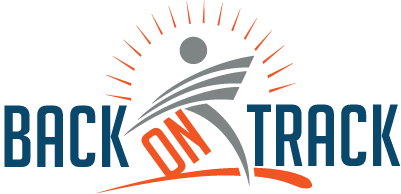Stop Throwing Spaghetti at the Wall: How to Make Training Stick in Your Small Business
- Motty Chen

- Aug 31
- 2 min read
Stop Throwing Training Spaghetti at the Wall (and Hoping it Sticks)
Ever feel like you're investing in employee training, but it's not translating into real results? Like you're throwing spaghetti at the wall and hoping something sticks? You're not alone. Many small business owners struggle to create training programs that truly move the needle. The secret lies in understanding the learning process itself.
The Real-World Learning Process: It's Not Just Classrooms and Quizzes
Forget the image of dusty textbooks and boring lectures. Real learning is dynamic, ongoing, and happens both inside and outside the formal training environment. It's about acquiring knowledge and skills, yes, but more importantly, it's about applying that knowledge to improve performance immediately. Think of it as a continuous cycle: experience, reflect, apply, repeat.
Start with a Needs Assessment: Know Your Gaps
Before you design a single training module, you need a crystal-clear understanding of your company's needs. This means conducting a thorough needs assessment that covers three key areas:
Organizational: What are your company's strategic goals? Where are the performance gaps hindering your progress?
Task: What specific skills and knowledge are required for each role to achieve those goals?
Individual: What are the existing skills and knowledge of your employees? Where do individual learning needs lie?
This assessment gives you a targeted roadmap for training, ensuring you invest resources where they'll have the biggest impact.
The 70/20/10 Rule: Embrace Informal Learning
Formal training programs are only one piece of the puzzle. The 70/20/10 model suggests that 70% of learning happens on the job through experience, 20% through social interaction and mentoring, and only 10% through formal training. So how do you leverage this?
Create opportunities for challenging assignments: Stretch your employees' capabilities and encourage them to learn by doing.
Foster a culture of mentorship and peer learning: Pair experienced employees with newer team members to share knowledge and best practices.
Make formal training targeted and relevant: Focus on filling specific skill gaps identified in your needs assessment, rather than generic training programs.
Keep it Engaging and Relevant: No More Snoozefests!
Ditch the death-by-PowerPoint approach. Effective training is interactive, engaging, and relevant to employees' day-to-day work. Think hands-on workshops, simulations, case studies, and online learning modules that can be accessed on demand.
Feedback is Fuel: Keep the Learning Cycle Going
Feedback is crucial for continuous improvement. Regular check-ins, performance reviews, and 360-degree feedback provide valuable insights into how employees are applying their new skills and knowledge. This also helps identify areas where further training or support might be needed.
Align Training with Your Vision: The True North
Ultimately, your training programs should be tightly aligned with your overall business objectives and your company's core values. When you're clear on your "True North," it becomes easier to design training that supports your vision and drives real, measurable results. At Back on Track, our True North Leadership program helps business owners define that vision and build a roadmap for achieving it, including a tailored approach to training and development. If you're ready to stop throwing spaghetti at the wall and start seeing real results from your training investments, schedule a complimentary True North Leadership Strategy Session with us at [link to discovery call].




Comments